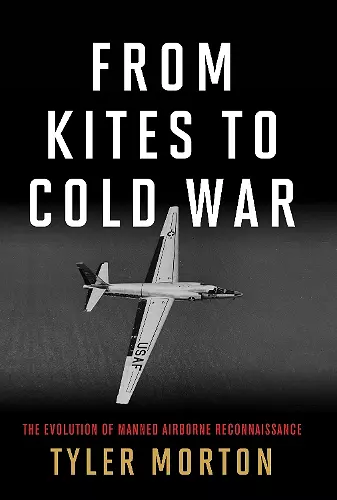From Kites to Cold War
The Evolution of Manned Airborne Reconnaissance
Format:Hardback
Publisher:Naval Institute Press
Published:30th Nov '19
Currently unavailable, our supplier has not provided us a restock date

From Kites to Cold War tells the story of the evolution of manned airborne reconnaissance.
Long a desire of military commanders, the ability to see the terrain ahead and gain foreknowledge of enemy intent was realised when Chinese airmen mounted kites to surveil their surroundings. Kite technology was slow to spread, and by the late nineteenth century, European nations had developed the balloon and airship to conduct this mission.
By 1918, it was obvious that the airplane had become the reconnaissance platform of the future. Used successfully by many nations during the Great War, aircraft technology and capability experienced its most rapid evolutionary period during World War II. Entering the war with just basic airborne imagery capabilities, by V-E and V-J days, air power pioneers greatly improved imagery collection and developed sophisticated airborne signals intelligence collection capabilities. The United States and other nations put these capabilities to use as the Cold War immediately followed. Flying near the periphery of and sometimes directly over the Soviet Union, airborne reconnaissance provided the intelligence necessary to stay one step ahead of the Soviets throughout the Cold War.
Tracing the progression from the first visual observers suspended beneath balloons to aerial photography and later electronic signals and communications exploitation, From Kites to Cold Warably illustrates how each exquisite airborne intelligence capability demanded more than just another magic black box bolted to an aircraft; innovative organizations and skilled operators were crucial to transforming the once-futuristic concepts into the ubiquitous intelligence products of today. With the US military currently reimagining its airborne intelligence enterprise, Morton's superb analysis is a must read, offering timely and vital historical context to current deliberations." —Steven Fino, author of Tiger Check: Automating the US Air Force Fighter Pilot in Air-to-Air Combat, 1950-1980
"Morton chronicles the value of manned aircraft for observation, intelligence, and reconnaissance well before the advent of powered flight right up to the present. Wide-ranging and informative, this account emphasizes the importance and continued relevance of the first military mission for powered flight in engaging and thoroughly researched prose." —John Terino, Chairman, Department of Airpower, USAF Air Command and Staff College
ISBN: 9781682474655
Dimensions: unknown
Weight: 671g
328 pages